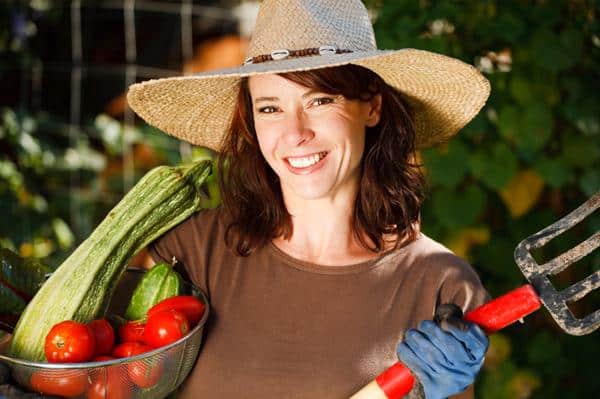 As the winter chill carries over into the New Year, it’s time for goat owners to gear up for the spring kidding season. Anticipation, excitement and just a bit of nervousness fill our days now as we watch our does’ round barrels spreading out further and further, and their appetites continuing to increase. Pretty soon we’ll be bringing them into their birthing stalls or checking the pastures routinely to ensure all is well. As you gear up for the spring kidding season, let me share some timely advice for the newbie as well as some good reminders for the veteran.
As the winter chill carries over into the New Year, it’s time for goat owners to gear up for the spring kidding season. Anticipation, excitement and just a bit of nervousness fill our days now as we watch our does’ round barrels spreading out further and further, and their appetites continuing to increase. Pretty soon we’ll be bringing them into their birthing stalls or checking the pastures routinely to ensure all is well. As you gear up for the spring kidding season, let me share some timely advice for the newbie as well as some good reminders for the veteran.
Two to Three Months Before the Due Date
While there’s not much to do early on, if you are milking your doe, you’ll want to dry her off between two and three months prior to her due date as her body needs time to rest. She’ll spend these next couple months concentrating her efforts on developing her babies and preparing for the big day.
Five to Six Weeks Before the Due Date
Now is the time to booster with a C/DT vaccine along with trimming hooves and administering a wormer. (CAUTION: Check with your veterinarian about which wormer to use with a pregnant doe as some can cause pregnancy complications or abortion.) If your property is selenium deficient, give your doe a selenium/vitamin E injection. Watch your doe closely for pregnancy toxemia/ketosis and increase her feed gradually during this period, as well. She’s eating for an entire family now and the extra nutrition will certainly help when it comes to the big day. If you choose to have your doe kid in a barn, move her to the pen now, as well. She’ll take this time to adjust before the stress of birthing hits.
A Week or Two Before the Due Date
Shave your doe’s udder and around and under her tail. This will help with clean-up after birth, and will be beneficial if intervention is necessary. Take a moment to trim your own nails as they’ll need to be short and smooth should you need to go in after a stubborn kid. Additionally, pull together your birthing kit (see below). Take a deep breath and relax a little; you’re ready to go!
The Basic Kidding Kit
While birthing is a natural process and many goats birth routinely without any help from their shepherds, there are some things that are always good to have on hand. Choose an easy-to-carry bucket or chest for your kit. You’ll want supplies for cleanup (puppy training pads, old feed bags, towels or paper towels, a plentiful supply of fresh straw, garbage bags) and supplies for attending to the umbilical cord (hemostats or dental floss for tying off the cord if needed, iodine or betadine, a shot glass for applying iodine to the umbilical cord stub, sharp scissors in case you need to cut the cord).
Successfully Raise Farm Animals With The Backyard Homestead Guide…
Additionally you might want to keep some Banamine handy for your doe for pain relief after a difficult birth, and some selenium/vitamin E supplement to give the kids. (While not always necessary, many shepherds give their kids a selenium/vitamin E boost after birth. This has saved the lives of weak babies and gives stronger kids an added boost.) Nutri-drench can be a life-saver for an exhausted mother. If you don’t have Nutri-drench, plan on adding some molasses or honey to the mother’s water to give her a boost after labor and delivery.
Hopefully you won’t need to do much more than stand back and watch, but you’ll want to have a few more things on hand just in case everything doesn’t go smoothly. Have the veterinarian’s phone number nearby and make sure that you are able to reach them anytime (especially at night as it seems goats have an uncanny knack for going into labor then). You could also have the number of another experienced goat birther on hand. Just be sure they are open to being contacted day or night. Additionally, you may want to add some shoulder-length sterile OB gloves, plenty of lubricant (Suberlube or Nolvalube), and an adjustable lamb/kid puller should a kid need turned or an exhausted mother need some help. Have some milk replacer, a kid feeding tube, and a bottle with a Pritchard teat available in case a weak or orphaned kid needs help.
Here We Go!
A week before your doe is due, it’s best to begin checking on her regularly for labor signs. Some does give little warning, while others can be quite expressive. She may begin to breath heavily, have a worried look on her face, and paw at the bedding. Her udder may appear somewhat shiny and the area above her tail and around her hip bones will appear sunken in. Additionally, she may look back at her sides and “talk” quietly to her in utero babies. She will appear restless as labor progresses and eventually, the contractions will come together more closely and she will begin pushing harder. Does can deliver standing up and lying down, so try to stay out of her way and allow things to progress as naturally as possible.
A translucent bubble of the amniotic sac surrounding the kid will appear first. This sac often ruptures before the kid is expelled, but if it doesn’t, prepare to rupture it with your fingers or sharp scissors (being careful of the kid inside) once the kid is expelled. In a normal presentation, you’ll soon see a hoof or two followed by a little nose. The shoulders will come next and the kid will slide out. The doe should begin nuzzling and licking the kid right away. Clear the kid’s face of membranes and fluid, and suck out any fluid from the nostrils with a bulb syringe. Return the kid to the mother so they can bond. The doe will spend some time with this kid, but pushing for the next kid will begin shortly. As each kid is born, interfere as little as possible. While you are waiting for the next kid, you can dip the already born kid’s umbilical cord in iodine by holding a shot glass filled with iodine to the kid’s naval area. (DO NOT FORGET THIS STEP.) If the umbilical cord continues bleeding, apply a hemostat or use clean dental floss to tie it off. Once all the kids have been delivered, feed the doe; molasses water and some fresh hay will be appreciated. You can also clear up some of the soiled straw, but be careful not to interrupt the mother and her babies. This bonding time is important for them. Be there to support your goat, but as long as she is handling things well on her own, step back and quietly watch.
When To Call the Vet
While many does kid successfully on their own, if you sense something is not right, if your doe seems to be in excessive pain or laboring hard for an extended time without producing a kid, call your veterinarian or birth expert. Some birth presentations can cause problems; kids that are breech, have their legs folded back, head twisted back, or multiple kids in the birth canal need help from an experienced goat birther or vet to help straighten things out. Don’t be afraid to call and ask for help. That’s what they are there for!
Happy Kidding!
As you prepare to welcome kids this spring, whether it is your first or 10th time, I anticipate with you. There’s nothing sweeter than little kids springing over the new grass or nuzzling up to their momma’s for a quick suckle. While the above information is far from exhaustive, it should get you started. Pick up one or more of the excellent goat references available and develop relationships with other goat aficionados in your area or online. You’ll receive help and support from them and can share your own experiences. Happy Kidding!
Sign up for Off The Grid News’ weekly email and stay informed about the issues important to you











